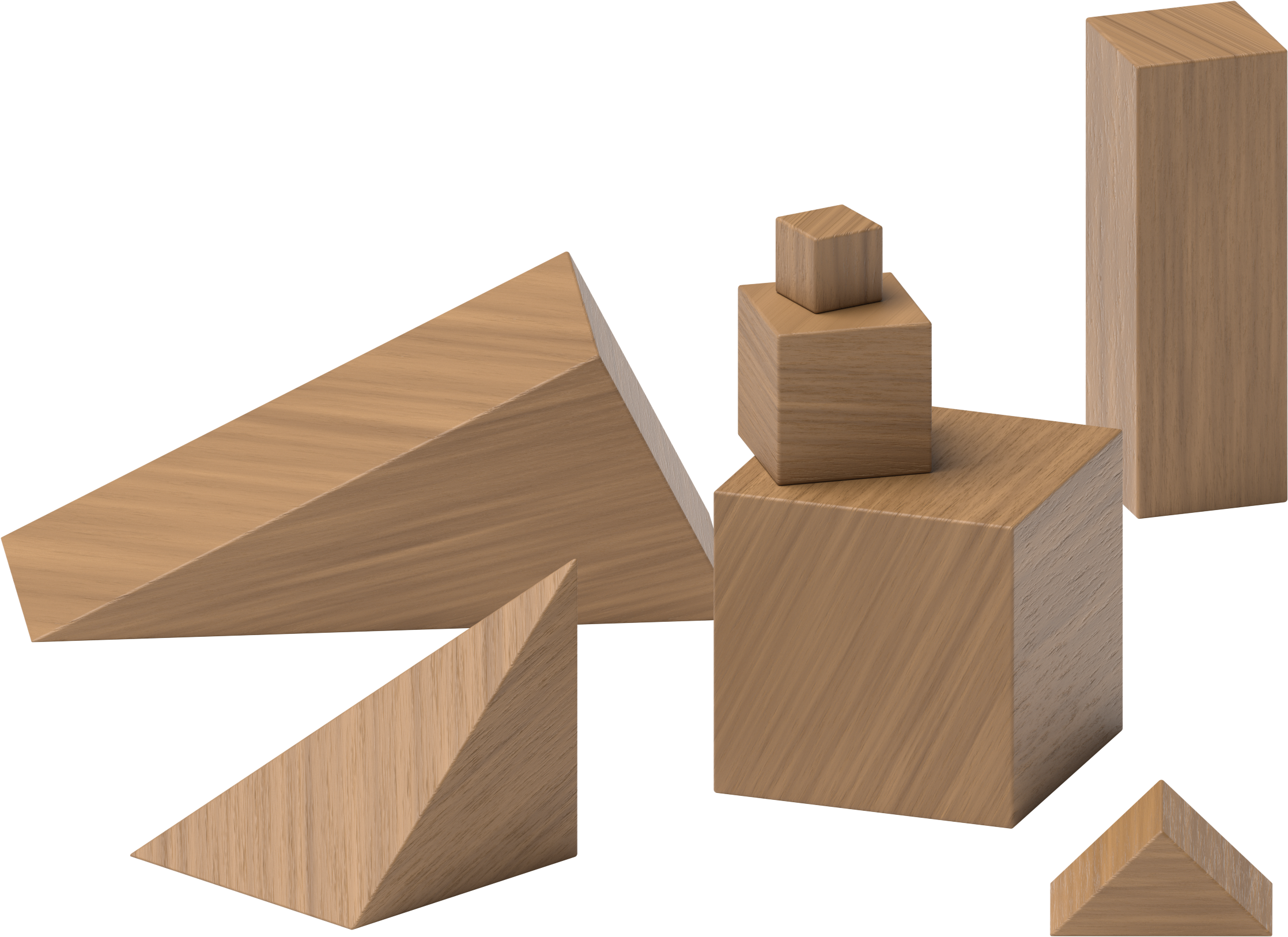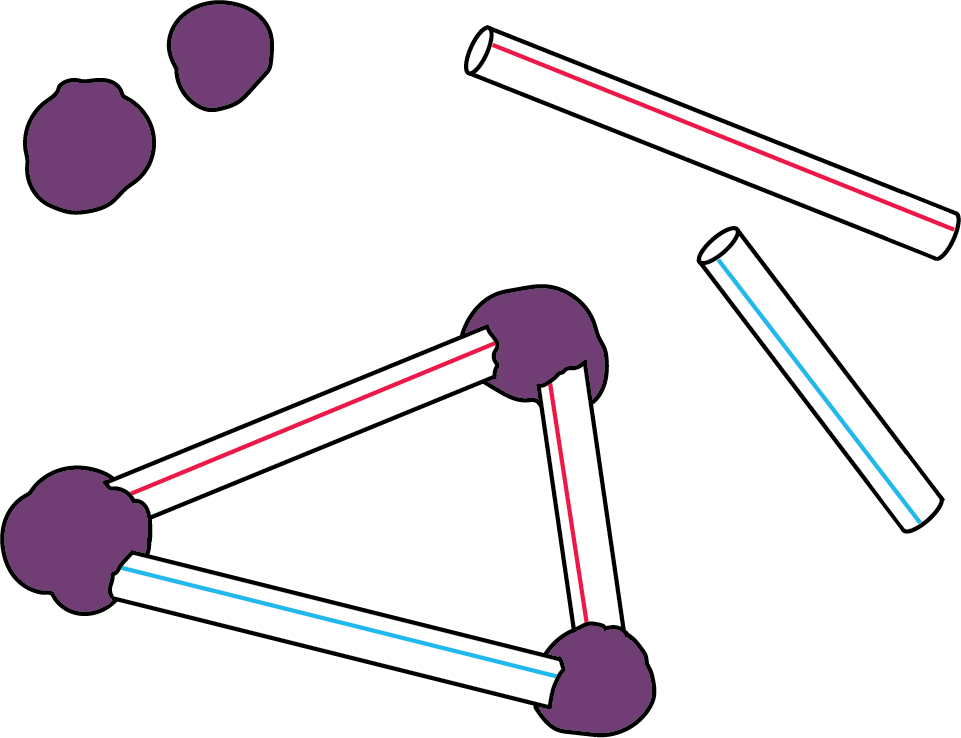Lesson 12
More than One Way to Make a Shape
Warm-up: Which One Doesn’t Belong: Pattern Block Trapezoids (10 minutes)
Narrative
Launch
- Groups of 2
- Display the image.
- “Pick one that doesn’t belong. Be ready to share why it doesn’t belong.”
- 30 seconds: quiet think time
Activity
- “Discuss your thinking with your partner.”
- 1 minute: partner discussion
- Share and record responses.
Student Facing
Which one doesn’t belong?




Student Response
For access, consult one of our IM Certified Partners.
Activity Synthesis
- “Let’s find a reason why each one doesn’t belong.”
Activity 1: Introduce Pattern Blocks, Puzzle Challenge (10 minutes)
Narrative
The purpose of this activity is to introduce students to stage 5 of the Pattern Blocks center. Students use pattern blocks to fill in puzzles that don’t show each individual pattern block. A puzzle is printed in the student book for this activity. A blackline master with more puzzles is available for students to use during center activities in future lessons.
Students may experiment with different shapes or begin with a part of the puzzle where they can see what shape looks like it will fit. In either case, as they fill in the puzzle, each choice they make will influence which shapes they can use and whether or not they can fill in the entire puzzle so students will need to persevere and likely go back and make changes (MP1).
Supports accessibility for: Socio-Emotional Functioning, Organization
Required Materials
Materials to Gather
Materials to Copy
- Pattern Blocks Stage 5 Mat
- Pattern Blocks Stage 5 Recording Sheet
Launch
- Groups of 2
- Give each student pattern blocks.
- “We are going to learn a new way to do the Pattern Blocks center.”
- Display the book.
- “What do you notice? What do you wonder?” (They are puzzles. Some of the lines in the middle aren’t there.)
- 30 seconds: quiet think time
- 30 seconds: partner discussion
- Share responses.
- “Use the pattern blocks to fill in the puzzle. Write a number to show how many of each pattern block you used.”
Activity
- 4 minutes: independent work time
- Monitor for students who fill in the puzzle with different pattern blocks.
Student Facing













Student Response
For access, consult one of our IM Certified Partners.
Activity Synthesis
- “Did you fill in the puzzle the same way as your partner?”
- 1 minute: partner discussion
- Display 2 puzzles filled in by students.
- “What is the same? What is different?”
- 30 seconds: quiet think time
- 30 seconds: partner discussion
- Share responses.
- “There are different ways that we can put together pattern blocks to make shapes.”
Activity 2: Many Ways to Make a Hexagon (10 minutes)
Narrative
The purpose of this activity is for students to put together pattern blocks to form larger shapes in more than one way. Students create hexagons using different combinations of pattern blocks. In the synthesis, students discuss whether the same pattern blocks in different orientations should be considered as different ways to make a hexagon (MP3). There is no one correct answer to the question. The goal is for students to notice and discuss that the same pattern blocks are arranged in different orientations.
Advances: Listening, Speaking
Required Materials
Materials to Gather
Launch
- Groups of 2
- Give each group of students pattern blocks.
- “Work with your partner to find many different ways to make hexagons with pattern blocks. Tell your partner about the shapes that you use each time using ‘more’, ‘fewer’, or ‘the same number’.”
Activity
- 6 minutes: partner work time
Student Facing






Student Response
For access, consult one of our IM Certified Partners.
Advancing Student Thinking
If students find one or two ways to fill in the hexagon pattern block puzzle:
- “Tell me more about which pattern blocks you used to make the hexagon.”
- “Can you use these green triangle pattern blocks to make this red trapezoid pattern block? How can that help you find another way to fill in the hexagon?”
Activity Synthesis
- Invite students to share different ways they made a hexagon.
- As students share, say “Tell your partner about the shapes that they used using ‘more’, ‘fewer’, or ‘the same number’.”
- Display all of the ways to make a hexagon that students have shared.
- “Are there any other ways to make a hexagon with pattern blocks?”
- Display 2 hexagons created with 2 blue rhombus pattern blocks and 2 green triangle pattern blocks in different orientations:
- “Han and Clare shared these ways to make a hexagon with pattern blocks. Are these the same way to make a hexagon or a different way? Why do you think that?” (They are the same because they used the same pattern blocks but put them in different spots. It looks like they flipped it. They are different because the pattern blocks are in different places, so they look different.)
Activity 3: Centers: Choice Time (20 minutes)
Narrative
The purpose of this activity is for students to choose from activities that offer practice building shapes and putting together shapes to form larger shapes.
Students choose from any stage of previously introduced centers.
- Geoblocks
- Build Shapes
- Pattern Blocks
- Less, Same, More
Required Materials
Materials to Gather
Required Preparation
- Gather materials from:
- Geoblocks, Stages 1 and 2
- Build Shapes, Stages 1 and 2
- Pattern Blocks, Stages 1-5
- Less, Same, More, Stages 1-4
Launch
- “Today we are going to choose from centers we have already learned.”
- Display the center choices in the student book.
- “Think about what you would like to do first.”
- 30 seconds: quiet think time
Activity
- Invite students to work at the center of their choice.
- 8 minutes: center work time
- “Choose what you would like to do next.”
- 8 minutes: center work time
Student Facing
Choose a center.
Geoblocks

Build Shapes

Pattern Blocks

Less, Same, More

Activity Synthesis
- “Which pattern block puzzle was your favorite?”
Lesson Synthesis
Lesson Synthesis

“What pattern blocks could you use to finish this puzzle?” (A red trapezoid pattern block, 3 green triangle pattern blocks, 1 blue rhombus pattern block and 1 green triangle pattern block.)
If needed, allow students to experiment with pattern blocks.
Share responses. Demonstrate or invite students to demonstrate making the missing piece with pattern blocks.
Cool-down: Unit 3, Section B Checkpoint (0 minutes)
Cool-Down
For access, consult one of our IM Certified Partners.

